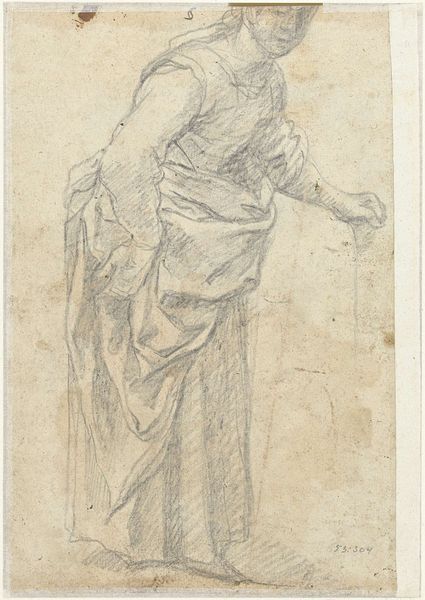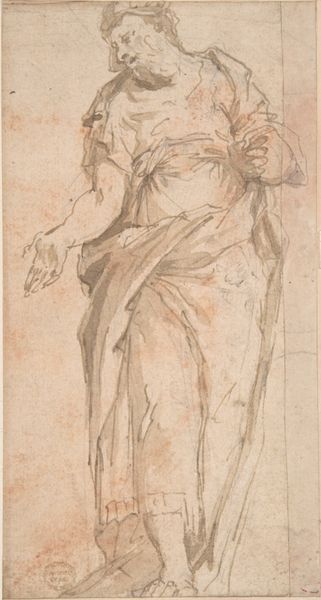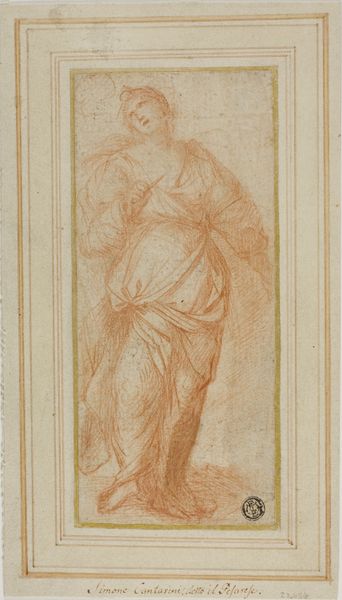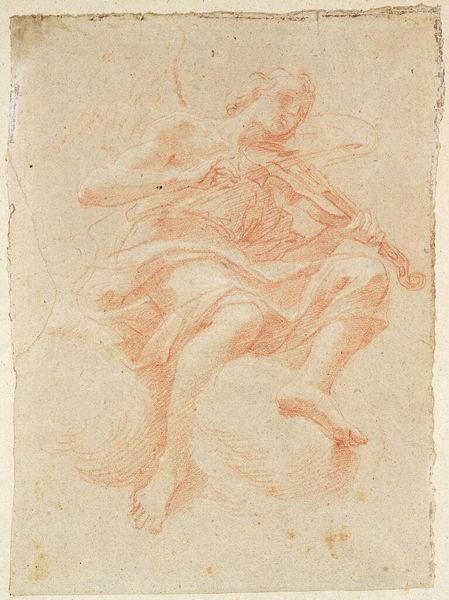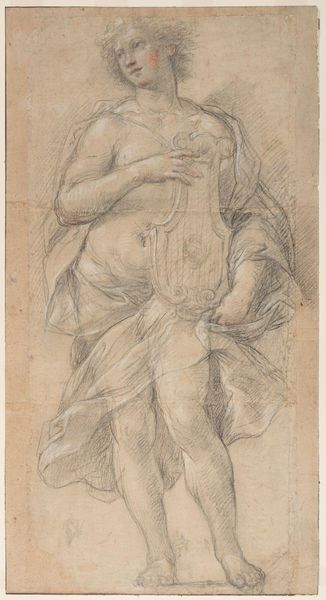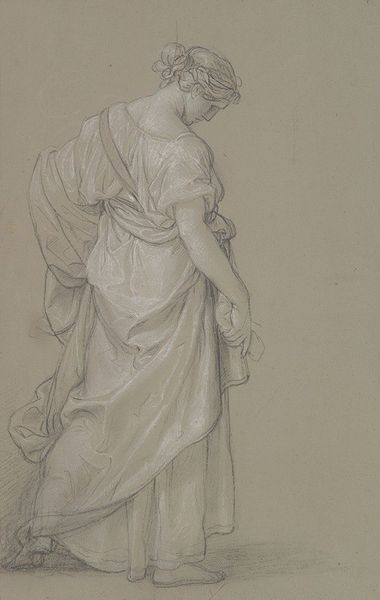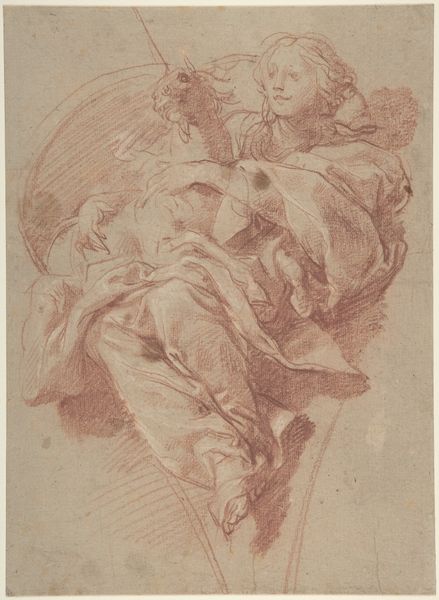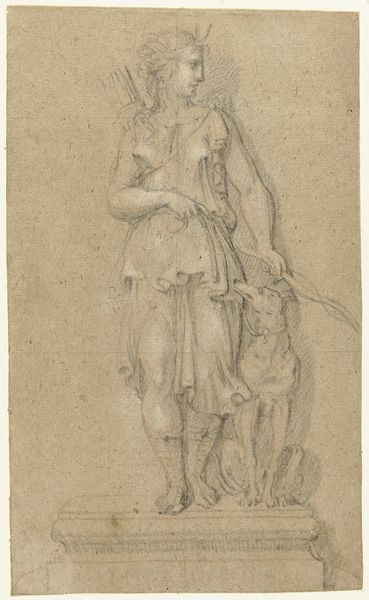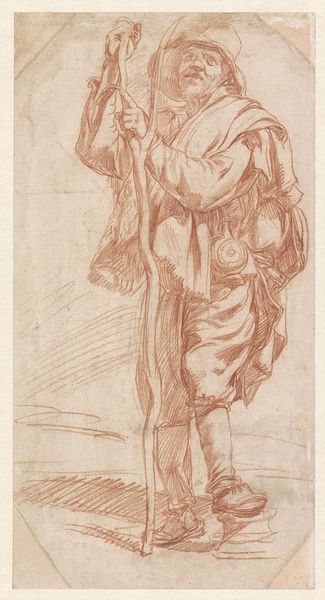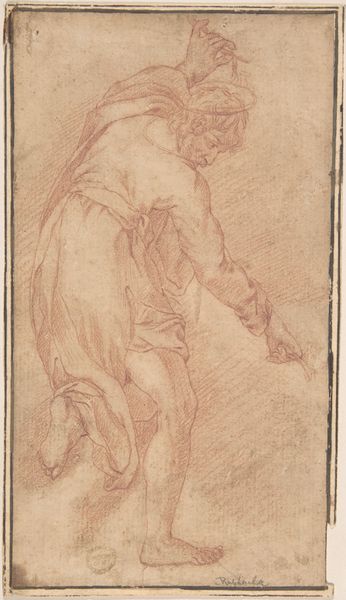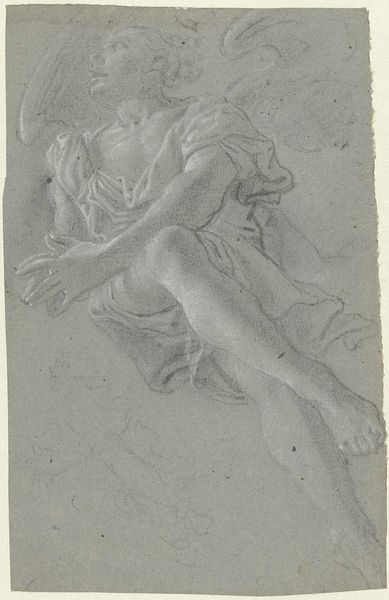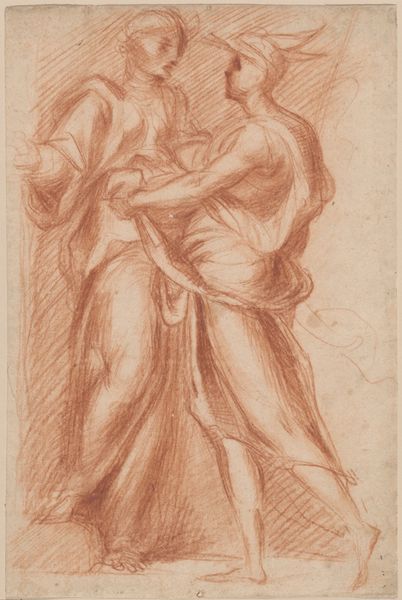
drawing, paper, pencil
#
portrait
#
drawing
#
pencil sketch
#
figuration
#
paper
#
pencil drawing
#
pencil
#
italian-renaissance
Dimensions: height 346 mm, width 322 mm
Copyright: Rijks Museum: Open Domain
Curator: This drawing, "Studie van een staande figuur," is attributed to Benedetto Luti and was created sometime between 1676 and 1724. It’s a study, done in pencil on paper. What strikes you first? Editor: The dynamism. It feels like she’s either about to take flight or collapsing, you know? It's teetering on that edge, all swirling fabric and uncertain balance. Makes you wonder what drama is unfolding, even in just a quick sketch. Curator: Indeed. Notice how Luti uses line weight to suggest form and movement, a common trait among Italian Renaissance artists? The flowing drapery is quite typical—a classical trope referencing status. In classical figurative artwork, the folds denote the cultural and/or symbolic identity and moral character. Editor: The paper tone helps that ethereal feel too, it lifts it off the blue page... Like she’s a memory, or an idea in the making. You almost forget it's just pencil on paper. Speaking of which, you know, it’s curious how preliminary sketches reveal the inner-working of artistic thinking. The process itself laid bare for the viewers. Curator: Precisely. Also, the dynamism could imply many meanings from the spiritual to the bodily, and this very sense of ambivalence adds weight to its symbolic density. We know the renaissance put emphasis on humans, so we can’t really know for sure what the standing figure here represents in this liminal space. Editor: I love that we can read so much into a preparatory sketch, an accidental preservation. Curator: An invitation for all of us to speculate the meaning in art, even the most basic form of creation contains symbols and weight from memory and human creation. Editor: It does give you pause, doesn't it?
Comments
No comments
Be the first to comment and join the conversation on the ultimate creative platform.
